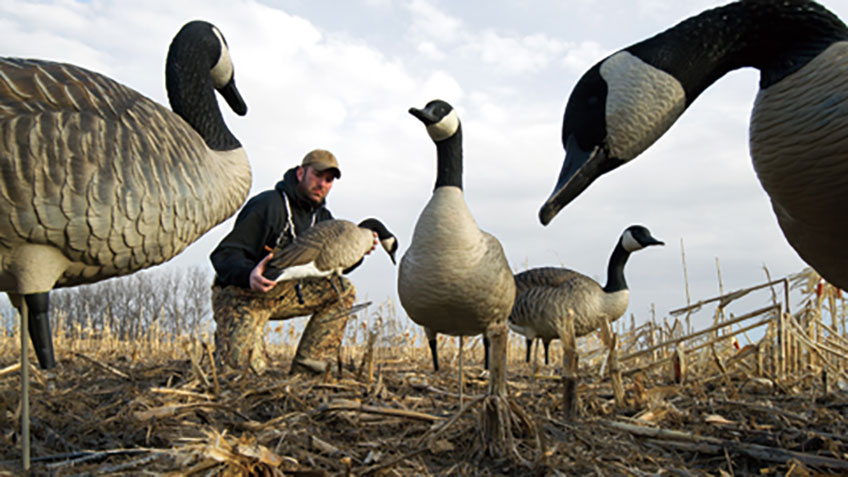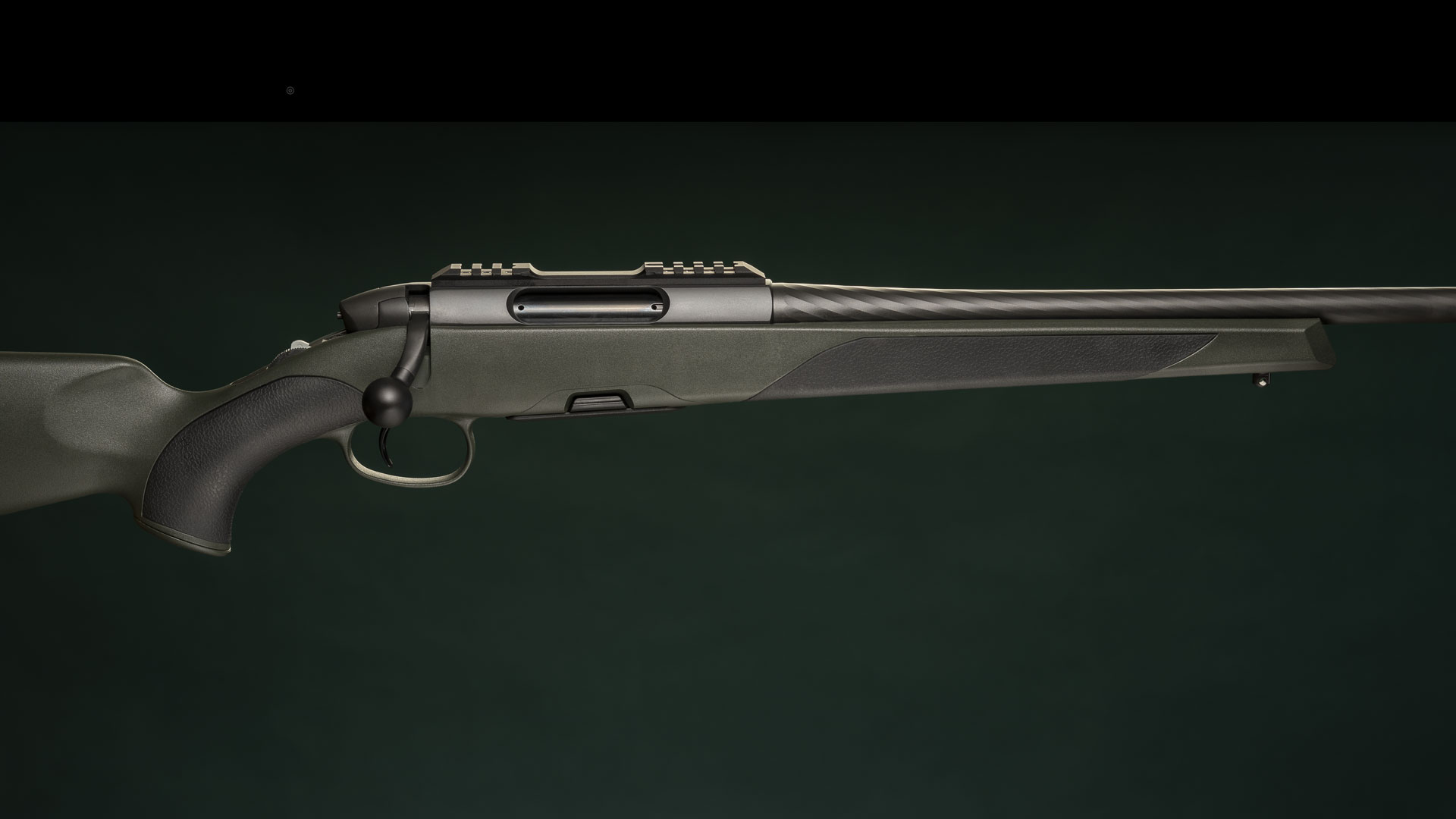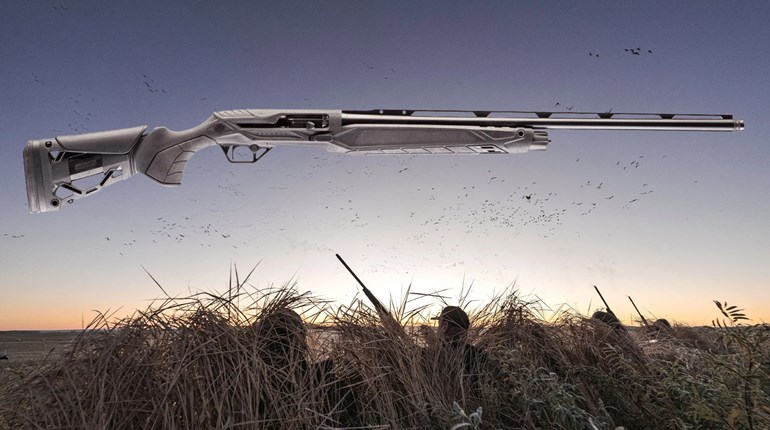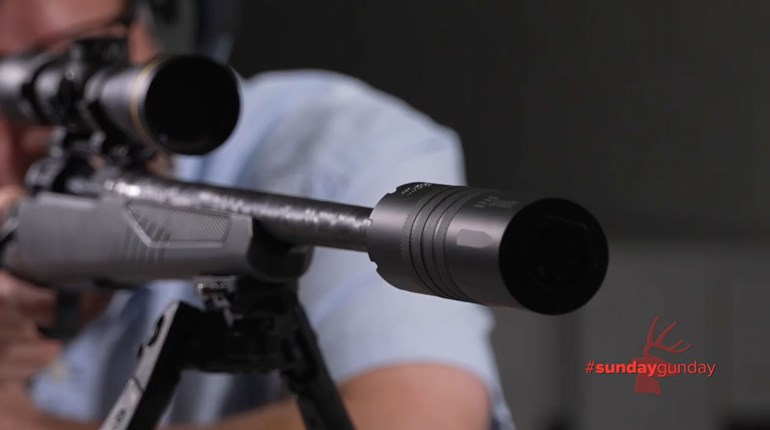
Goose hunting can get tough. It gets difficult every season when the flow of new geese dries up and you’re stuck with the same birds that have been pounded by the same hunters day after day. The birds start to skirt your decoys. They flare from your flagging and calls. They fly to fields without making a sound. Suddenly everything that once brought them drifting into your spread seems to be working against you. What gives?
Fred Zink, owner of Zink Calls and Avian-X, and Scott Threinen, three-time World Live Goose Calling Champion and owner of Molt Gear, say if you want different results, you’re going to need different tactics. Here are their tactics.
1. Dare to be Different
“If the same three or five groups of hunters are hunting the same geese for weeks on end, the geese are going to get conditioned,” says Zink. “It’s inevitable. So first look at how you and other hunters are hunting them. What decoys are you using? How many? Is everyone hunting out of layout blinds in the middle of fields? Is everyone blowing hard on a goose call as soon as a flock comes into sight? Is everyone flagging aggressively? Geese aren’t stupid. When the same sights and sounds result in them getting shot at, they wise up fast.”
2. Where to Set Up
You’ll want to set up underneath a flight path and where a food source is visible, particularly in cold weather when birds want to conserve energy. But wherever you hunt, says Threinen, “do not set up in the obvious places you and every other hunter have been using, like high spots in the middle of fields. Geese learn to be suspicious of spreads in the same places.”
Zink couldn’t agree more; he cites poor camouflage as the biggest reason geese won’t decoy in the late season. “Honkers eventually learn that dark humps (layout blinds) in the middle of spreads spell trouble. Instead, try hiding in fence rows using natural vegetation. Or set your layout blinds outside the decoys, preferably on the sunny side of the spread where approaching geese are blinded by direct sunlight or the reflection coming off the snow. If you bunch up the blinds and brush them heavily, they’ll look like clumps of weeds or windblown tumbleweeds.”
Anyone who’s watched Threinen’s “The Goose Society” DVD knows that having a mediocre hiding spot away from the decoys where wary, late-season geese are going to focus their attention is more important than blending in perfectly. If you’re far enough off to the side, the geese won’t be looking for you. Yet in and around the spread Threinen’s a stickler for details—he even rakes out footprints and tire tracks in the snow.
3. Decoy Change Up
Traditional U- or J-shaped decoy spreads mean trouble to hunter-weary honkers. Threinen will spread out his decoys in clusters of feeding circles (where he’s raked away the snow) with walkers between them. Absent a landing zone in front of the hunters, he’ll rely on calling and subtle flagging to center up the geese. In cold weather they frequently plop down on their bellies the moment they touch ground. Full-bodies without their stakes, along with resters and shells, will imitate this natural behavior. Both he and Zink further suggest looking at other hunters’ spreads and going with something completely different, especially size-wise.
“If everyone’s been using 60 to 100 decoys,” says Zink, “try four to 18. If they’ve all been using Bigfoots or other full-bodies, mix it up with shells, silhouettes or super high-end decoys. The less the geese have seen a certain type of spread, the more effective it will be.”
In some areas late-season geese will be paired up, so represent that in your setup with a dominant lookout pose paired with a feeder or rester decoy, advises Zink. And open up the decoys so they don’t look like a spread. He’s also a huge proponent of fully flocked decoys.
4. Calling and Flagging
There’s no doubt that phenomenal callers like Zink and Threinen have a jump on most hunters, but they also change their tune to score consistently on wary birds. When geese approach most spreads, they’re routinely met with lots of loud calling from hunters and plenty of enthusiastic flag waving. They quickly learn to be on guard.
That’s why it’s critical to learn how to read geese, even as far away as 500 yards. According to Zink, body language is 20 percent of the calling equation; the rest is listening to them, something you can’t do if you immediately blow on your call the moment you see a flock.
“Quiet geese are smart geese, and if you just start calling to them, the game’s over. If they don’t say a word, you shouldn’t either. Lots of times they’ll approach a spread silently then start clucking when they get 50 to 100 yards away. In that case start mimicking them. Try sharp clucks. Geese on the ground use this call to warn off approaching flocks, as well as what we call ‘ground sounds,’ the noises they make when feeding or loafing.
“Each flock can be different this time of year, so don’t treat them alike. Talkative birds are more likely to decoy and respond well to more calling. But you may have to let quiet geese fly past you, then turn them with comeback calls. Obviously, if you’re hunting over 150 to 300 decoys, you’re going to have to make some noise. But if you’re hunting over four to 18 there’s a lot of flexibility.”
Too much flagging can also get you in trouble. Geese have excellent eyesight. You don’t need to wave a flag high and wildly to get their attention—in other words, like every other hunter. Keep movement natural looking. When you’ve turned a flock, flag sparingly and only as high as the backs of your decoys, imitating a goose stretching its wings.
Hunter-wise geese may be difficult to fool, but if you take your cues from the geese in your area—and not from other hunters—you should see your fair share of limit hunts. Of course, if success still eludes you, Zink and Threinen will readily point out that there’s no law saying you can’t hop in a truck and start scouting areas that see fewer hunters. For late-season honkers, there’s more than one way to cook a goose.




































